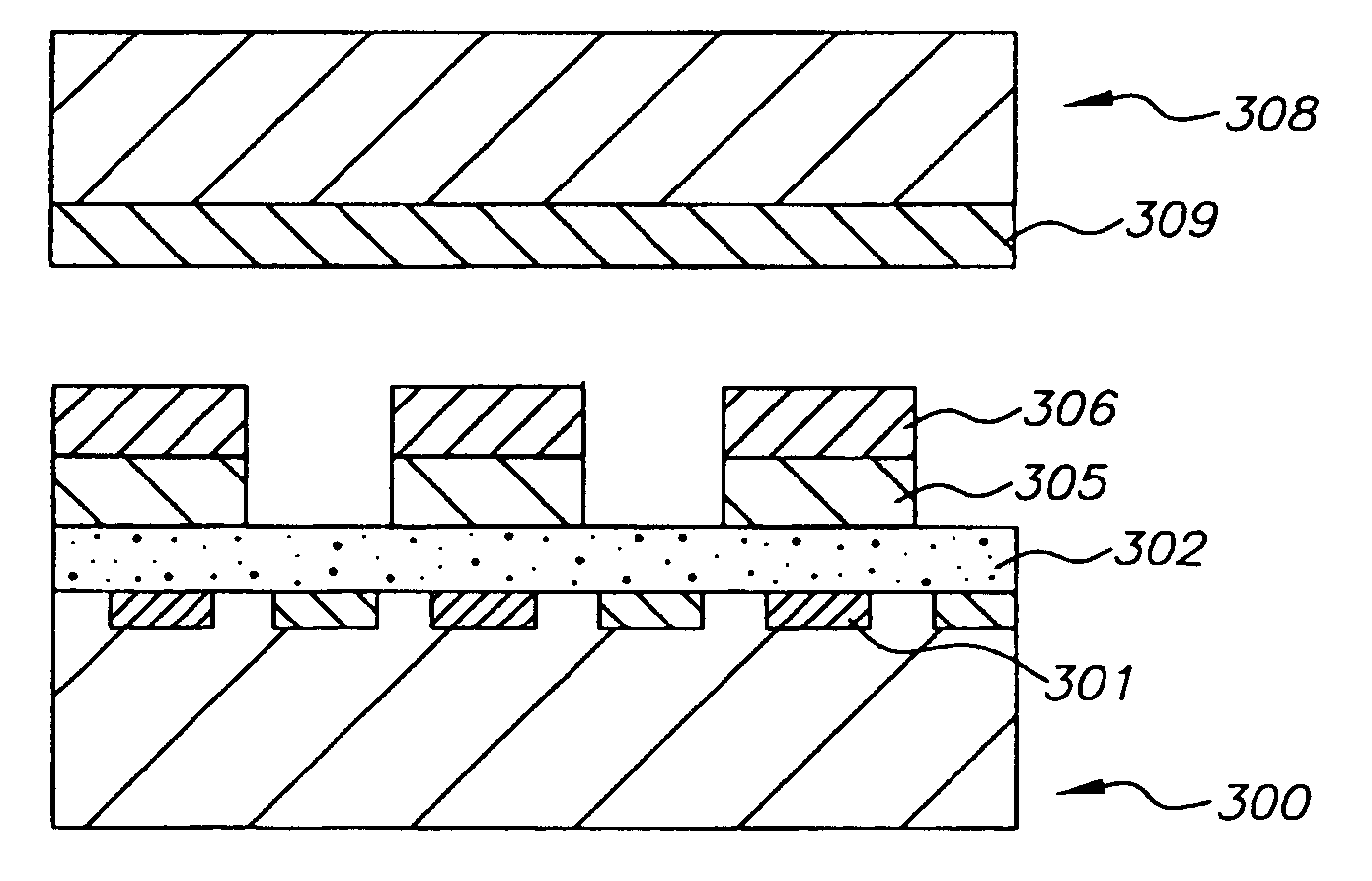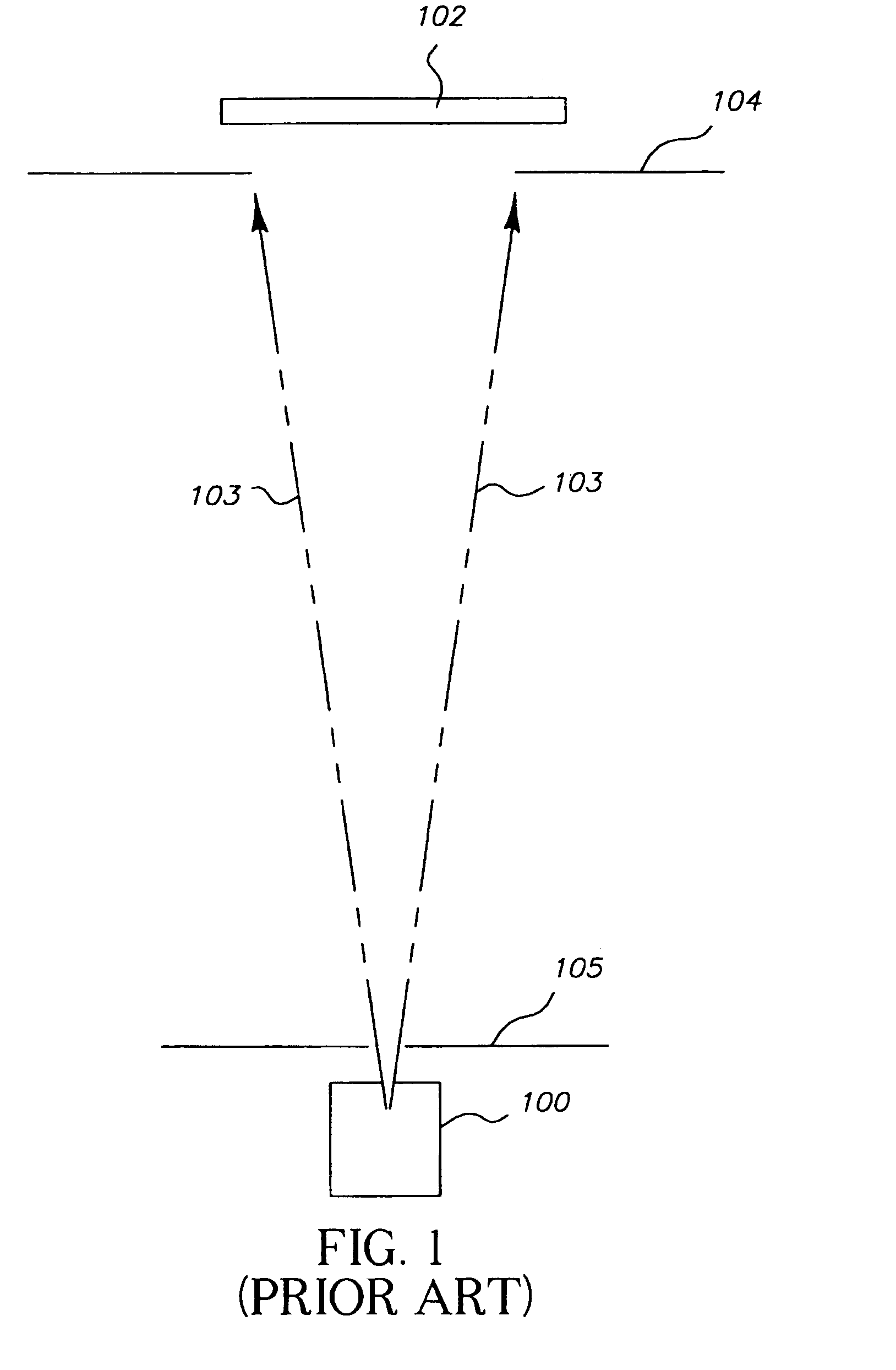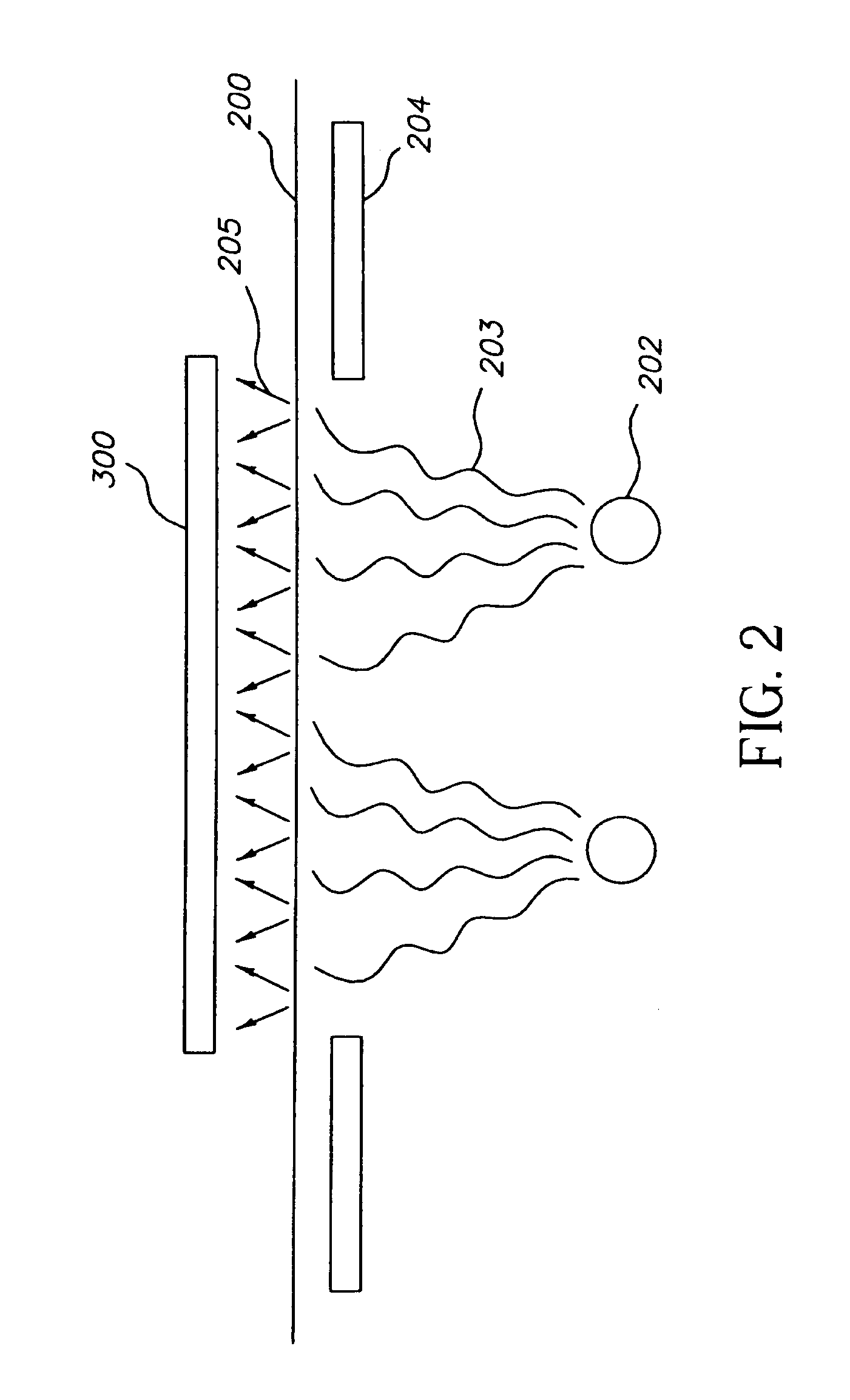Method of making inlaid color filter arrays
a filter array and color technology, applied in the field of color filter arrays, can solve the problems of limiting the smallest dimension which can be used over very small filter elements, loss of edge sharpness of filter elements, and swelling of the receiving layer, so as to achieve high quality uniformity over large areas, precise control of layer thickness, and effective utilization of evaporant materials
- Summary
- Abstract
- Description
- Claims
- Application Information
AI Technical Summary
Benefits of technology
Problems solved by technology
Method used
Image
Examples
example 1
[0035]A tantalum boat was half-filled with about 0.1 gm of Pigment Yellow 110 (Ciba-Geigy Corp.), placed under a partial vacuum of about 2.5×10E−5 Torr, and heated to a temperature of 375–417 degrees C. by passing an electric current through it. The material which evaporated from the boat was condensed on a section of stainless steel foil, about 25 microns thick, maintained at ambient temperature. The thickness of the deposit was monitored by an oscillating quartz crystal monitor, and was stopped when the thickness reached about 0.45 microns.
[0036]In a similar fashion, the coated steel foil was coated with about 0.15 microns of titanyl phthalocyanine (H.W. Sands Co.), at a pressure of about 2×10E−4 Torr and over a temperature range of 331–437 degrees C.
[0037]The double-coated steel foil was positioned about 2 mm from a glass slide, clamped between two electrodes, placed in a partial vacuum of about 3.3×10E−5 Torr, and heated by the passage of an electric current at 30 volts for 10 s...
example 2
[0038]A similar procedure was followed as given in Example 1, except that the colorants were deposited in the reverse order. The colorants transferred completely to the glass slide, and appeared to form a clear, continuous layer.
example 3
[0039]Commercially obtained titanyl phthalocyanine (Aldrich Chemical Co.) was placed in a tantalum boat and heated by passing electrical current through it, while maintaining a reduced pressure of about 1.1×10E−4 Torr in a vacuum bell jar. About 0.15 microns of the phthalocyanine were deposited onto a section of stainless steel foil, having a thickness of about 25 microns. The coated foil was used as the substrate for a second colorant layer in a second step, heating Pigment Orange 36 (Novoperm Orange HL-70 from Hoechst Celanese Corp.) in a tantalum boat at a pressure of about 1.3×10E−4 Torr. About 0.3 microns of the pigment were deposited on the phthalocyanine coating, forming a double-layer coating on the steel foil. The double-coated foil was then mounted about 2 mm distant from a section of a silicon wafer bearing an adhesion promoting layer of 1.0 microns of poly(methyl glutarimide) (PMGI from Microelectronics Chemical Corp.) and a patterned layer of AZ5214IR photoresist (Hoech...
PUM
| Property | Measurement | Unit |
|---|---|---|
| pressures | aaaaa | aaaaa |
| distance | aaaaa | aaaaa |
| pressure | aaaaa | aaaaa |
Abstract
Description
Claims
Application Information
 Login to View More
Login to View More - R&D
- Intellectual Property
- Life Sciences
- Materials
- Tech Scout
- Unparalleled Data Quality
- Higher Quality Content
- 60% Fewer Hallucinations
Browse by: Latest US Patents, China's latest patents, Technical Efficacy Thesaurus, Application Domain, Technology Topic, Popular Technical Reports.
© 2025 PatSnap. All rights reserved.Legal|Privacy policy|Modern Slavery Act Transparency Statement|Sitemap|About US| Contact US: help@patsnap.com



